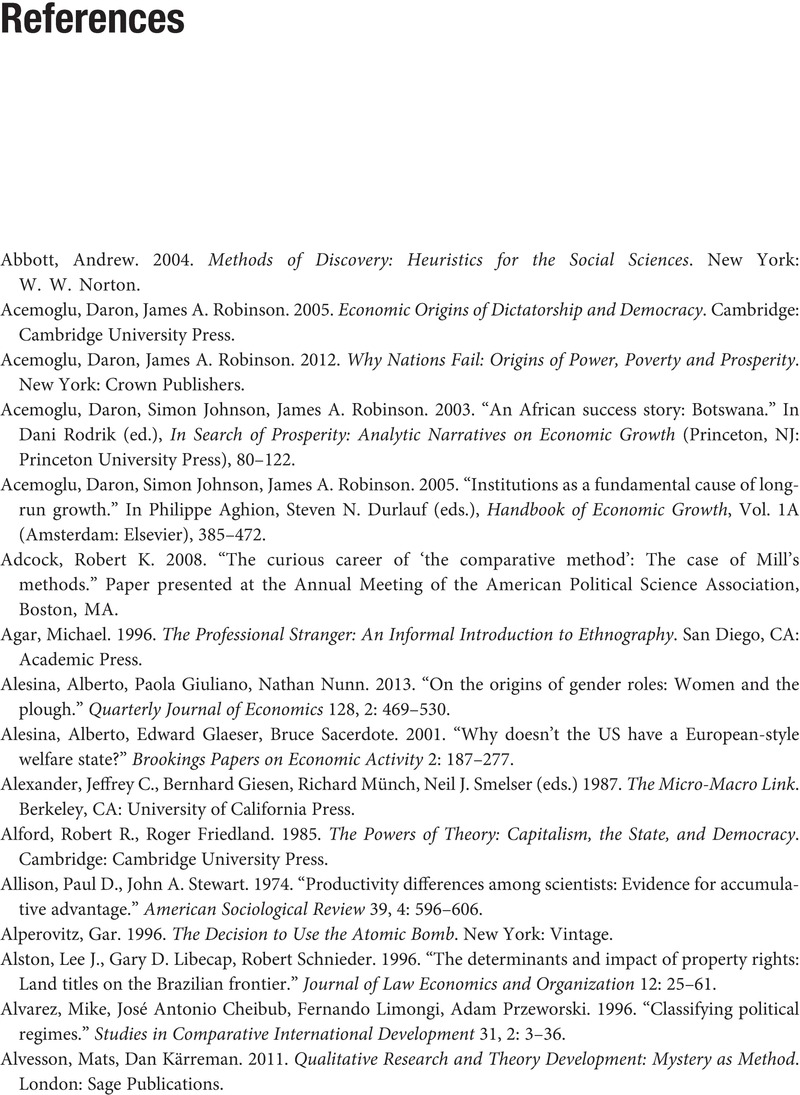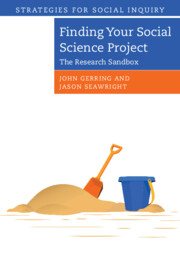Book contents
- Finding Your Social Science Project
- Strategies for Social Inquiry
- Finding Your Social Science Project
- Copyright page
- Contents
- Detailed Contents
- Figures
- Tables
- Acknowledgments
- Glossary
- 1 Introduction
- Part I Overview
- Part II Playing with Ideas
- Part III Playing with Data
- Part IV Playing with Theories
- Part V Conclusions
- Appendix A Surveys and Interviews
- References
- Index
- References
References
Published online by Cambridge University Press: 06 October 2022
- Finding Your Social Science Project
- Strategies for Social Inquiry
- Finding Your Social Science Project
- Copyright page
- Contents
- Detailed Contents
- Figures
- Tables
- Acknowledgments
- Glossary
- 1 Introduction
- Part I Overview
- Part II Playing with Ideas
- Part III Playing with Data
- Part IV Playing with Theories
- Part V Conclusions
- Appendix A Surveys and Interviews
- References
- Index
- References
Summary

- Type
- Chapter
- Information
- Finding your Social Science ProjectThe Research Sandbox, pp. 300 - 331Publisher: Cambridge University PressPrint publication year: 2022



